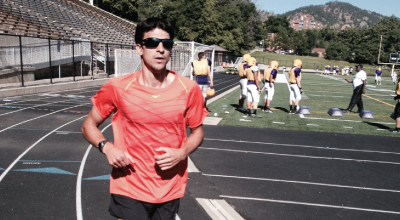
Mizuno Athlete, Patrick Rizzo talks racing flats.
Sometimes we take our experiences for granted. We assume that everyone knows what we know because…well, WE know it! I ran into this issue this month when asked about racing flats and when to use them. Somehow I didn’t have a formulated answer. I had to actually think of how to describe it to a new runner.
I have spent the last 16 years of my life running competitively and the last 8 years working running specialty retail. There aren’t many questions left that I haven’t answered in one venue or another. Yet the question about when to wear racing flats threw me a curve ball.
I think of myself, the runner, as a craftsman…a carpenter let’s say. Every shoe is a tool that I can use to enhance the amount of jobs I can possibly perform. I have my hammer (Wave Creations), my screwdriver (Wave Rider), and then I have those less-commonly-used tools. I have the pliers (Wave Hitogami), a ratchet (Wave Sayonara), my awl (the rarely used Wave Ekiden), and the precisely calibrated torque wrench (Wave Kazan).
Each tool has a specific job for the carpenter and each shoe has a specific purpose for the runner. My Creations are my go-to, high-mileage trainer. My Riders see a lot of my basic miles and afternoon runs. The Hitogami is used for hard workouts on road surfaces. The Ekiden is just a tad bit more precise for FAST road work or track work. Even the Kazan is irreplaceable in my line-up as I run a lot of trails here in Colorado’s beautiful front range.
At any given point in time, I have 5 or so shoes in my current rotation. I would bet that if you were to ask another elite runner how many he/she has, you might hear a similar answer. So the question with running shoes comes to the “why?” part of the equation.
In the past 16 years, I’ve only taken 2 unplanned days off of running (I don’t count 5 days after getting hit by a car as a running injury and I did run with 28 stitches in my head after that). I attribute this to rotating shoes. To put that into perspective, you wouldn’t go to the weight room every day and only lift one weight with one muscle group every day, never changing the weight or the muscles worked, would you? That’s what we creatures of habbit (runners) tend to do though. We run the same loop in the same direction at the same time of the day at the same pace in the same shoes every day and expect that we’ll never get an overuse injury. Rotating shoes allows a runner to work different stimuli, different muscles, tendons, and ligaments every time out so we can avoid those nagging overuse injuries.
I find that any given week, I use every shoe in my rotation 2-3 times. There are days where I find myself wearing 4 different shoes in ONE DAY!!! I wear one shoe to warm up for a workout (Wave Creation), another during the intervals of my workout (Wave Hitogami), then another for my afternoon run (Wave Rider), then finally something lower and lighter for some strides after my second run (Wave Sayonara or Ekiden).
Each shoe gives me a different running position and a different ride for my body. I need the softer training shoes to keep impact out of my body (Wave Rider and Creation) then the firmer shoes to let my muscles build density for racing (Wave Hitogami, Ekiden, and Sayonara).
So when do I wear a racing flat? When I’m doing specific speed work toward racing. It’s my shoe equivalent to my Ferrari. I bring it out for my fast-riding, limited-mileage workouts so I can practice race specifics. I may not put a ton of mileage on my racing flats, but when I do, even my mindset is shifted to race mode. Racing flats are more than shoes; they’re a psychology, a state of being even. When I lace up my Ekiden, I fly. When I lace up my Hitogami, I float. Either way, the experience is when to wear the racing flats. Run on, dear friends.
